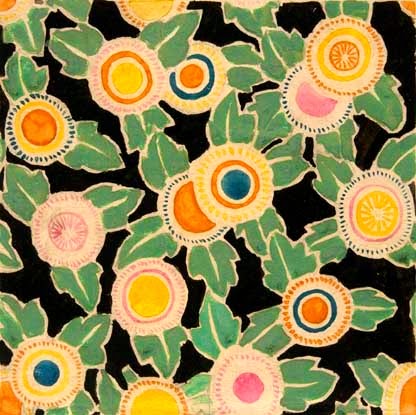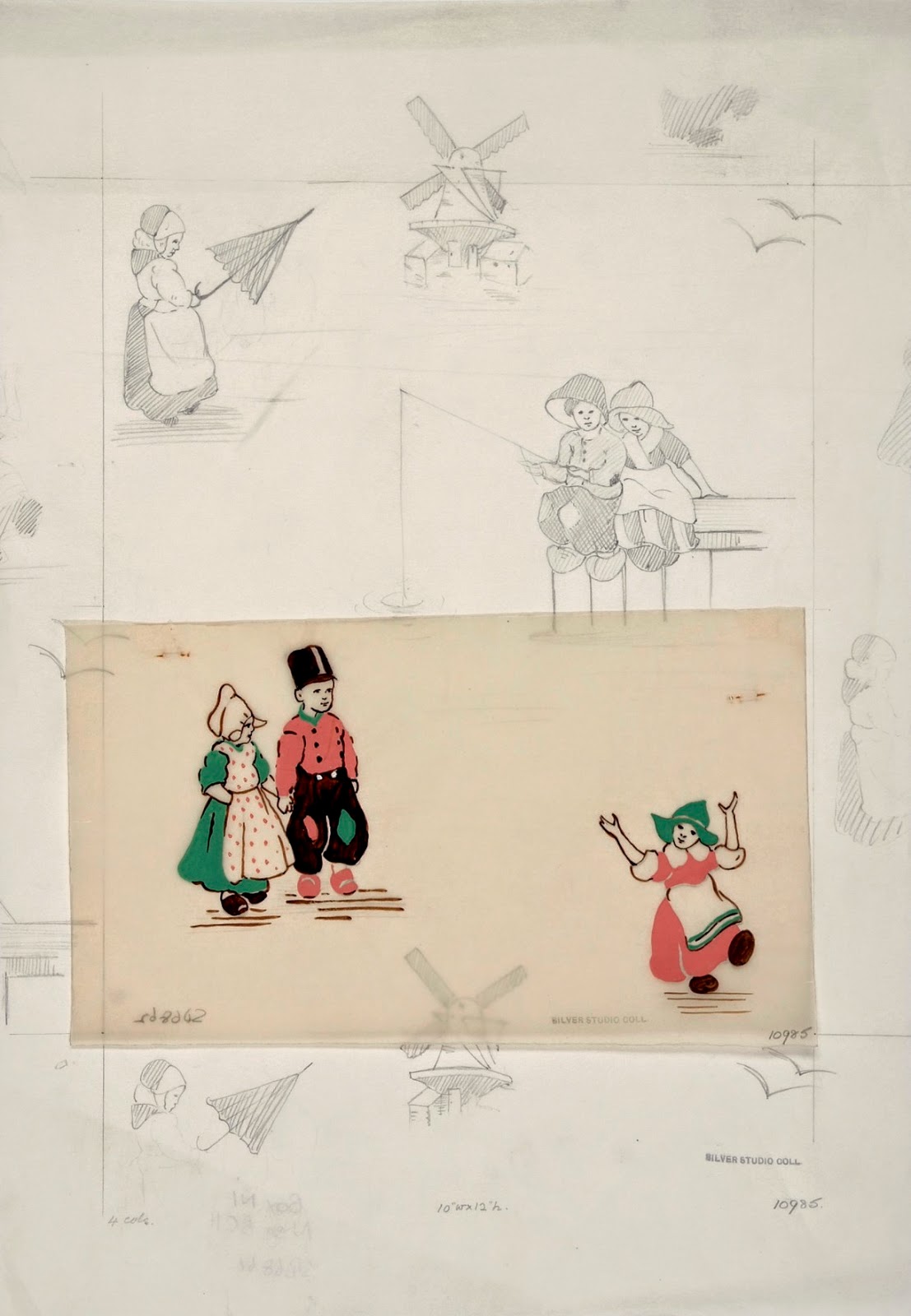Tracing Paper
MoDA’s Preventative Conservation Officer, Emma Shaw, shares her knowledge of tracing papers.
I recently attended a two day Conservation of Tracing Paper Workshop at
Tate Britain lead by
Hildegard Homburger, a paper conservator from Berlin with a great deal of experience in the conservation of architectural designs and art works on tracing paper. The course was attended by conservators from a range of institutions including: Ireland’s National Libraries, the Munch Museum in Oslo, RIBA at the V&A, and the Tate, as well as student conservators and conservators in private practice.
Tracing papers at MoDA

Photograph of the interior of the Silver Studio at 1 Haarlem Road, Brook Green, Hammersmith, taken in 1967. The image shows how large collections of working designs, including those on tracing paper, were stored.
Here at MoDA we have a large number of designs, including drawings, paintings and sketches for interior furnishings and dress fabrics made on transparent or semi-transparent papers of all kinds. In fact they probably comprise around a quarter of the estimated 40,000 designs in the
Silver Studio Collection.
We have made great progress in making these items accessible for research and display over the years. (See for example our AHRC-funded project,
Interwar Suburban Style).
But there remain a significant number yet to be considered for conservation and documentation in order to make them accessible for MoDA users.
The conservation course
This course was very useful in bringing me up to date with potential treatments that could be used on our more fragile, small scale items as and when the need arises. It helped me think about potential projects to make our larger scale designs on tracing paper (currently rolled or folded). And it prompted me to consider how to make more seriously damaged items accessible for museum documentation, or even digitisation should that become a possibility.

Silver Studio dress print design, 1928 on impregnated tracing paper (SD1454)
In all conservation, being able to identify the constituents of the materials you are treating (supports and media, in the case of paper items) informs what techniques will be useful to repair damage, and which ones may be harmful to an object.
In the case of tracing paper, it is particularly useful to be informed about the historic processes of production of the material, as it falls into two main types: papers impregnated with oils or resins to make them translucent, and papers made with other techniques – for example, the use of a brief acid treatment, or simply relying on a very finely beaten paper pulp, thinly dispersed and highly calendared with the use of heavy rollers.
Papers made in these different ways respond in differently when used by artists and designers, and their ageing properties are quite distinctive.

Silver Studio design (SD6861) Semi-transparent ‘natural’ paper with pencil drawing overlaid with tracing paper painted design (acid treated)

Silver Studio design (SD12739) Dyed natural/acid treated tracing paper
We also considered the possible effects of standard and specialist paper conservation techniques for the repair, stabilisation and housing or mounting of tracing paper objects. The use of solvents and various adhesives was also covered.

Silver Studio design (SD1519) impregnated tracing paper – showing very typical orange/brown discoloration
Hildegarde has worked with a large number of collections of tracing papers, so has been able to refine a range of highly specialized approaches over her long career as a paper conservator, some of which she explained and demonstrated.
A practical session followed lunch in the staff canteen, where we experimented with tear repair techniques using isinglass (fish bladder) glue, and a range of heat activated adhesives. We also tested out adhesive tape removal techniques. We also discussed wetting, drying and flattening techniques that are appropriate for tracing papers.
On the second day of the course we looked at techniques to infill missing areas in tracing papers, and practised Hildegarde’s own technique of lining tracing paper architectural plans (not much used these days).
This was followed in the afternoon by a discussion of wide range of case studies derived from Hildegarde’s experience of conserving tracing paper, and further questions from the attendees.
Conservation in action
It is particularly useful to have attended the course, and to have held our recent ‘in-conversation’ afternoon on MoDA’s tracing papers, since both events have given me the opportunity to spend a little time considering this material in detail and brought me into contact with other conservators who have an interest in – and experience of – dealing with transparent papers in a range of contexts.





Fascinating! I am a retired conservator trained in objects and archaeological materials. Now I am researching a 20th century artist's career and collecting her work. Now I have her portfolio of 1940's designs, many made on "tracing paper" with adhesive stains, etc etc. Short of hiring a fellow conservator (it may come to that) I am curious to learn more about this conference. Where might I find some notes, cds, whatever arose. Your description is wonderful. Thank you. Vicki in Nova Scotia Canada.